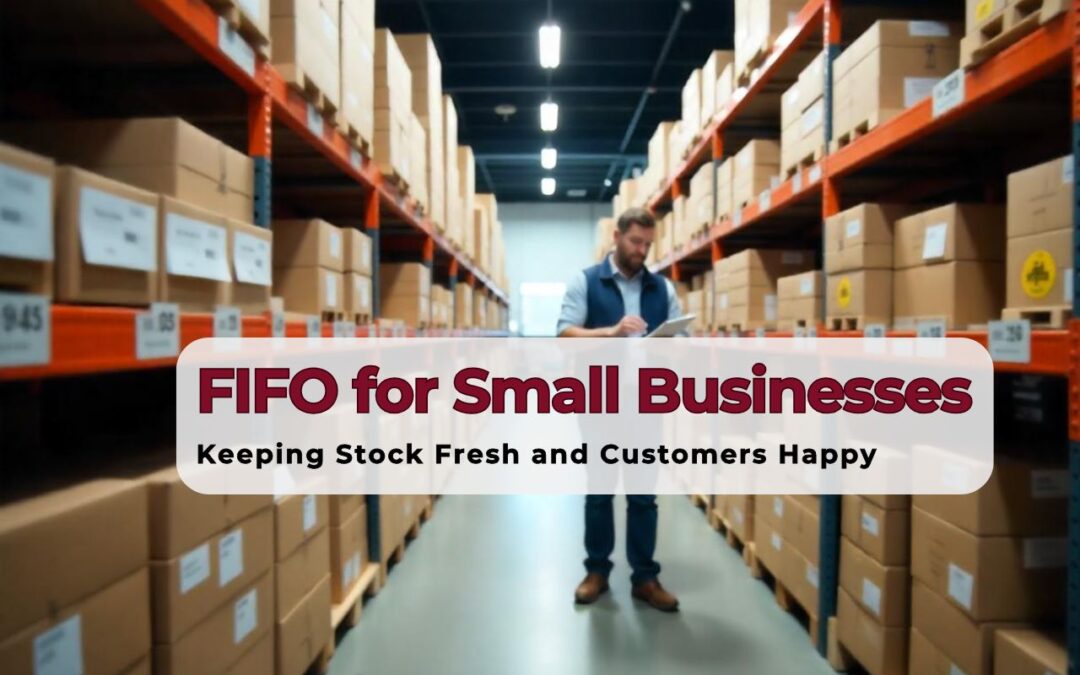In the ever-evolving world of small business, managing inventory efficiently is a crucial factor for profitability and customer satisfaction. One commonly used inventory management method that can significantly help small businesses stay organized and maintain quality control is the FIFO method, which stands for First In, First Out. At its core, FIFO ensures that the oldest stock is sold or used first, thereby minimizing the risk of spoilage, waste, and obsolescence. This blog will dive deep into why FIFO matters for small businesses, how it works, and how it contributes to fresher stock and happier customers.
Understanding FIFO: The Basics
FIFO is an inventory valuation and management method where the goods that are received first are the first ones to leave. It mirrors the natural flow of inventory for many types of products, especially those with expiration dates like food, cosmetics, and pharmaceuticals. The idea is simple: what comes in first, goes out first.
But the simplicity of the FIFO concept shouldn’t fool anyone. When applied strategically, FIFO becomes a powerful system to optimize business operations, prevent loss, and enhance customer experience.
Why FIFO Matters to Small Businesses
Small businesses typically don’t have the luxury of absorbing financial losses from expired, outdated, or unsellable inventory. FIFO helps tackle that challenge head-on. Here’s how:
1. Minimizes Waste and Spoilage
Especially for businesses dealing with perishable goods, FIFO is a non-negotiable. When newer stock is pushed to the back and older stock is used first, businesses can drastically reduce product spoilage. Even non-perishable products can become obsolete, so FIFO ensures stock rotation and avoids dead inventory sitting in storage.
2. Supports Accurate Financial Reporting
FIFO aligns well with actual product flow, especially during periods of inflation. When older, cheaper stock is sold first, cost of goods sold (COGS) remains lower, which can reflect higher profits. This, in turn, can positively affect financial statements, offering a more realistic view of profitability.
3. Improves Cash Flow
By ensuring that goods move in a timely manner and older stock doesn’t tie up capital, FIFO keeps inventory circulating and boosts cash flow. For small businesses, healthy cash flow is often the difference between growth and stagnation.
4. Enhances Customer Satisfaction
No customer wants to receive an item that is close to expiration, dusty from sitting in storage, or outdated. FIFO helps ensure that customers always receive the freshest and most up-to-date products, which contributes directly to a better brand experience and customer trust.
Industries Where FIFO Is Critical
FIFO is applicable across various industries, but it becomes particularly crucial in:
- Food and Beverage
- Health and Beauty
- Pharmaceuticals
- Retail (apparel, seasonal goods)
- Consumer Electronics
While some of these items might not expire in a traditional sense, trends, technology, and customer expectations often evolve rapidly, making older stock less desirable. FIFO helps small businesses stay relevant and efficient.
How FIFO Works in Practice
Implementing FIFO doesn’t always require advanced software or systems, especially for small businesses. It can be as simple as organizing shelves so that older inventory is always placed in front or accessible first.
Let’s say a small bakery receives a batch of flour every week. Using FIFO means the flour received first is used first, ensuring freshness in every baked good. Similarly, a small cosmetics retailer using FIFO will sell last season’s skincare products before introducing new arrivals to the front shelf.
Even without high-tech systems, simple FIFO practices like labeling inventory with arrival dates and training staff to stock new inventory behind old items can keep operations smooth and customer satisfaction high.
The Link Between FIFO and Customer Happiness
Customer satisfaction is the lifeblood of any small business. FIFO plays a quiet but powerful role in this domain. Here’s how:
Freshness and Quality
When products are always within their optimal shelf life, customers receive items in peak condition. This is especially important in consumables and skincare products, where expired or near-expired goods can result in health concerns or poor performance.
Consistency in Product Experience
FIFO ensures that each customer gets the same product quality every time. This consistency builds trust, which in turn encourages repeat business and positive word-of-mouth recommendations.
Fewer Refunds and Complaints
Outdated or subpar products are one of the major reasons for customer dissatisfaction and returns. By proactively managing stock with FIFO, businesses can reduce the likelihood of these issues and the administrative burden they create.
Overcoming FIFO Implementation Challenges
Adopting FIFO can come with a few operational hurdles for small businesses, especially those lacking formal inventory systems. However, with a bit of planning and discipline, these challenges can be managed.
Storage Design and Organization
One of the biggest challenges is ensuring that physical storage supports FIFO. Whether you’re running a warehouse, a stockroom, or a retail shelf, it’s important to design spaces that allow easy access to older stock and minimize the risk of newer stock being sold first.
Staff Training and Awareness
Employees play a crucial role in implementing FIFO. Regular training and clear communication about inventory rotation policies are essential. Staff should be trained to check dates, labels, or stock tags and organize accordingly.
Regular Inventory Checks
Frequent audits help identify any lapses in FIFO practices. Periodic stock reviews also ensure that items don’t get overlooked or expire unnoticed. This process might seem time-consuming but ultimately saves money and improves operational control.
The ROI of Using FIFO
Using FIFO isn’t just a best practice—it yields measurable returns. Some studies have shown that efficient inventory management, including FIFO, can reduce waste-related losses by up to 25%, especially in the food and beverage sector. Furthermore, businesses using structured inventory methods report better inventory turnover rates, which directly correlate with improved cash flow and profitability.
While small businesses might not track this data rigorously, the results are visible. Stock moves faster, customers are happier, and there’s less need to run clearance sales or throw away expired goods.
FIFO and Seasonal Stock Management
For small businesses selling seasonal goods—be it holiday decorations, fashion, or electronics—FIFO becomes a strategic tool. Seasonal items lose value quickly after their season ends. By using FIFO, businesses can ensure that older seasonal stock is prioritized for sale first, reducing the risk of markdowns or unsold inventory.
FIFO vs. Other Inventory Methods
While other methods like LIFO (Last In, First Out) or average cost method exist, FIFO is often preferred by small businesses due to its simplicity, logical flow, and alignment with customer needs.
Unlike other methods that might focus more on tax optimization or cost averaging, FIFO places a premium on stock freshness and quality—two things small businesses rely on heavily to build strong customer relationships.
FIFO for E-Commerce Businesses
Even online-only small businesses can benefit from FIFO. In e-commerce, it’s easy to lose sight of stock rotation since inventory is stored in fulfillment centers or warehouses. However, applying FIFO principles ensures that products sold online are fresh, up-to-date, and not nearing expiration or obsolescence.
Clear labeling, digital tracking, and disciplined warehouse management can make FIFO effective even in the fast-paced online world. Customers shopping online have higher expectations now than ever, and delivering consistent quality is critical for success.
Future-Proofing with FIFO
As sustainability and waste reduction become increasingly important to consumers and regulators alike, FIFO supports a more responsible business model. Reducing expired goods, preventing waste, and maintaining operational efficiency contribute to environmental and financial sustainability.
Small businesses that embrace FIFO today are better prepared to meet the growing demand for ethical, transparent, and efficient operations.
Final Thoughts
For small businesses, the FIFO method is far more than just a stock management tactic—it’s a philosophy of putting quality, efficiency, and customer satisfaction first. It ensures that inventory is sold in the right order, minimizes waste, and maximizes product quality.
By embracing FIFO, small business owners can simplify their inventory processes, reduce losses, and enhance customer experience. It’s a practical, effective strategy that doesn’t require massive investment but offers significant returns in performance, trust, and long-term growth.
Whether you’re running a boutique, a bakery, a wellness store, or an online brand, applying FIFO principles can make a meaningful difference in how your business operates and how your customers perceive you.













